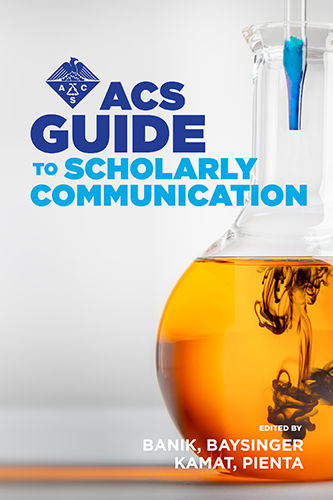Lab safety: New and noteworthy
About this guide
The purpose of this guide is to help chemists and chemical engineers RAMP (Recognize, Assess, and Minimize Risks of Hazards, and to Prepare for emergencies) up before going to the lab. Please see Stanford's Department of Environmental Health and Safety website for official information about Stanford's policies, procedures, and training.
Materials in this guide complement resources provided on Stanford's EH&S website. The search strategies page includes key resources plus search tips to find commonly needed types of chemical safety information. Please contact me if you need help.
Fostering a safety culture in Stanford labs
"PI’s are the single most important element for developing and sustaining a strong, proactive laboratory safety culture and must clearly communicate and reinforce to everyone within their groups that safety within their research laboratory is a top priority and define roles, responsibilities, authority and accountability for safety within their laboratory." Read more - A report on Advancing Safety Culture in the University Laboratory (2016)
New
 ACS Chemical Health and Safety by Mulcahy, M. B., Ed.Publication Date: 2020-"ACS Chemical Health & Safety is a global platform for ensuring that all members of the chemical enterprise receive access to new research, safety information, regulatory updates, effective chemical hygiene practices, and hazard assessment tools. The journal focuses on publishing high-quality articles of interest to scientists, EH&S professionals, and non-research personnel who manage or work in areas where chemicals are used or hazardous waste is generated. Manuscripts may include original research, critical examinations of safety incidents, or substantial, comprehensive, and readable reviews on topics and methodologies that advance chemical health and safety knowledge."
ACS Chemical Health and Safety by Mulcahy, M. B., Ed.Publication Date: 2020-"ACS Chemical Health & Safety is a global platform for ensuring that all members of the chemical enterprise receive access to new research, safety information, regulatory updates, effective chemical hygiene practices, and hazard assessment tools. The journal focuses on publishing high-quality articles of interest to scientists, EH&S professionals, and non-research personnel who manage or work in areas where chemicals are used or hazardous waste is generated. Manuscripts may include original research, critical examinations of safety incidents, or substantial, comprehensive, and readable reviews on topics and methodologies that advance chemical health and safety knowledge." ACS Guide to Scholarly Communication by Banik, G. M., Baysinger, G., Kamat, P. V., Pienta, N. J; Eds.Publication Date: 2020"The ACS Guide to Scholarly Communication covers everything from classic journal authoring topics (now completely modernized) such as organization of your article and peer review, to styling conventions needed for all scholarly communication, such as chemical nomenclature and effective writing and word usage, to emerging areas of interest in scholarly communication, including open access and open science, sharing data, communicating safety information, and preprints."
ACS Guide to Scholarly Communication by Banik, G. M., Baysinger, G., Kamat, P. V., Pienta, N. J; Eds.Publication Date: 2020"The ACS Guide to Scholarly Communication covers everything from classic journal authoring topics (now completely modernized) such as organization of your article and peer review, to styling conventions needed for all scholarly communication, such as chemical nomenclature and effective writing and word usage, to emerging areas of interest in scholarly communication, including open access and open science, sharing data, communicating safety information, and preprints."
- ACS Chemical & Laboratory Safety"ACS advocates for the safe practice of chemistry across disciplines, at every age, and in every organization. We engage with like-minded professionals and entities to provide tools to foster a culture of safety in your classroom, campus, or lab. Chemists understand that working with chemicals and developing new materials and chemical processes involve some degree of risk. Specific incidents in academic, industrial, and public settings emphasize the need for clear focus on safety throughout the chemistry enterprise." (website description)
Search the Chemical Safety Library: https://safescience.cas.org/
About: "The Chemical Safety Library, a database created for chemists to share information about hazardous reactions, will be moving to CAS, a division of the American Chemical Society. The library was originally developed by the Pistoia Alliance, which brings together life sciences industry stakeholders to address R&D challenges. Launched in 2017, the library now has more than 1,000 registered users and information from more than 140 incidents. Users can submit information to the library confidentially, and the data are freely available to the public and uploaded to PubChem, an open chemistry database supported by the National Institutes of Health. As CAS becomes host and developer of the Chemical Safety Library, it “will continue to be a free resource for the entire chemical community, enhanced with a new deposition and search interface developed by CAS,” CAS and Pistoia say in a joint statement." Source: Kemsley, Jyllian. Hazardous reactions database moving to CAS. C&EN, June 23,2020. (accessed 2020-09-06).
Noteworthy - Lab safety videos from JoVE
 JoVE science education. Lab safety."This collection provides safety guidelines to be followed when working with hazardous materials and equipment. It covers universal topics such as PPE, electrical safety, and general emergency guidelines, as well as some specific safety procedures for chemistry and biology laboratories."
JoVE science education. Lab safety."This collection provides safety guidelines to be followed when working with hazardous materials and equipment. It covers universal topics such as PPE, electrical safety, and general emergency guidelines, as well as some specific safety procedures for chemistry and biology laboratories."
- New and noteworthy
- Safety culture
- Guidelines & best practicesToggle Dropdown
- Recognize hazardsToggle Dropdown
- Assess and minimize risksToggle Dropdown
- Prepare for emergenciesToggle Dropdown
- Search strategies
Questions?

- Last Updated: Oct 16, 2024 12:21 PM
- URL: https://guides.library.stanford.edu/lab-safety
- Print Page

